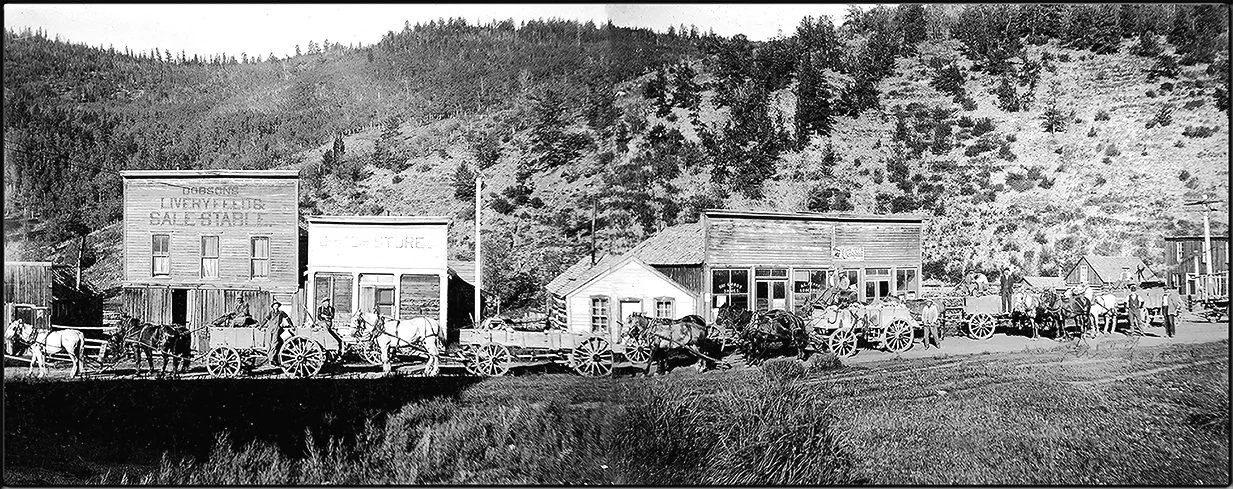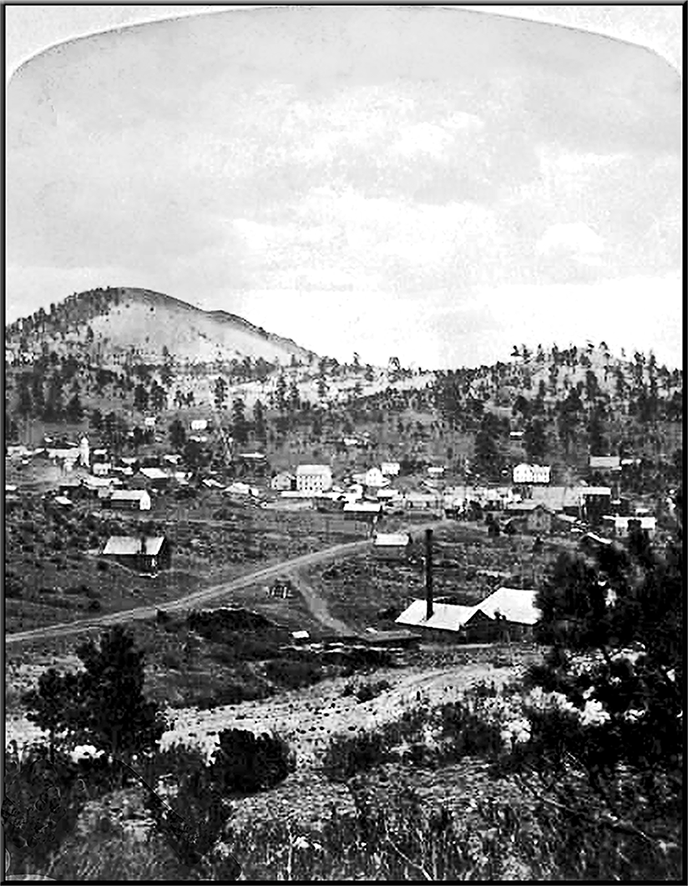
Art Jamison’s Colorado Memories:
Arthur Jamison riding “Challis,” in Boise, Idaho, 1969
Arthur Jamison grew up as a Colorado cowboy. He had a passion for working with horses, and that passion continued throughout his life. From the time he was a young teenager, Art would lasso wild horses on the range and bring them home to the Schriver corral. He would break, or train, them to become gentle saddle horses, which he could then sell to be ridden for ranch work. Art hired out as a skilled cowboy for other ranchers, and worked the large cattle round-ups each fall in the Wet Mountain Valley.
Below are slides of a few historical photographs from Colorado Memories: Growing Up on the Frontier.
Please read our section, About Our Slideshow Images, beneath the slide show.

1. Photographer Charles E. Emery’s View of Rosita, Colorado, 1880-1890. From a Stereograph, Denver Public Library, Special Collections, X-13222.
2. Shops and Stores in Rosita’s Business District. Close-up View, 1880s. Colorado Photo File: Custer County. Tutt Library, Colorado College, Colorado Springs, Special Collections, Edmond C. Van Diest Collection.
3. In Germany, the Schriver Family had raised draft horses, which they called the Big Blues. (Art wrote that in this country this breed is known as Blue Roans.) When the Schrivers came to America in 1837, they brought their horses with them. This photo shows Art Jamison with Molly, one of the Schriver Family’s “Big Blue” Draft Horses, on the Schriver Ranch in Rosita, 1915. Art is holding a large horseshoe. Anna Rose Barry, Family Collection.
4. The Arrival of Prince and Molly in Pueblo. Prince and Molly were two of the Schriver family’s Big Blue draft horses. Art wrote that both horses had lived to be more than 30 years old. Anna Rose Barry, Family Collection.
5. Photographer William Henry Jackson’s “In The Royal Gorge, Rio Grande Southern Railway, Arkansas River, Colorado,” 1890-1900. Shown in the photo are two large iron bars that were holding a suspension bridge. This bridge supported the train tracks, above the water. Courtesy of U.S. Library of Congress, Prints and Photographs Division, Detroit Publishing Co. Collection, LC-D4-13807.
6. Railway Stockyards in Westcliffe, Colorado. John Meyer, who owned a large cattle ranch, is standing alone on the car numbered 10252. This photo is courtesy of Betty Schmidt, a descendent of the Meyer Family, from her Family Collection.
7. The Contents of the J.A. Merriam Drug Store, established in Westcliffe, 1880, now on display at South Park City Historical Park, Fairplay, Colorado. When Merriam’s business closed, all of the medicines and notions, as well as the shop’s fixtures, were stored in the basement of the drug store building in downtown Westcliffe. In 1958, the contents were purchased for South Park City Historical Museum. There they are displayed in a replica store, just as they had been in Merriam’s. This is one of the most extensive collections of drugs and patent medicines preserved from the late 1800s, in the country. Anna Rose Barry, 2009
8. Wagons Hauling Freight to and from the mines in Telluride, Colorado, 1909. Art’s Uncle George Schriver developed a profitable business in hauling freight to and from the mines in various areas of Colorado. Art drove a freight wagon for him. Art Jamison is pictured sitting on the last wagon on the right, by the hand-drawn STAR on the photo. George Schriver is standing below, wearing a white shirt and a dark vest. George is the second man from the right. Anna Rose Barry, Family Collection.
9. On the porch of the Schriver home in Rosita, 1913. From the left, Edmond Barry, Rose Schriver Barry, Eva Brown Barker, Arthur Jamison, “Grandma” Matilda Schmidt Schriver, George Schriver, (child) Edmond Henry Barry.












